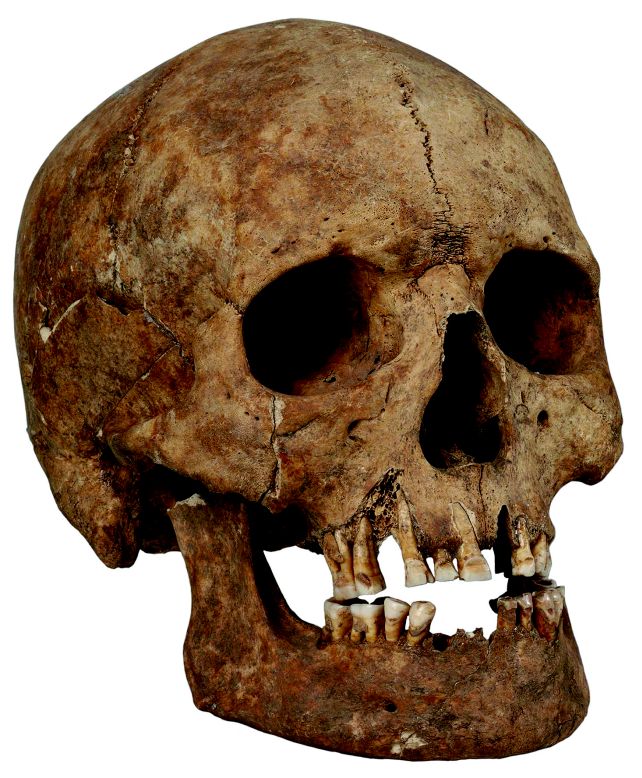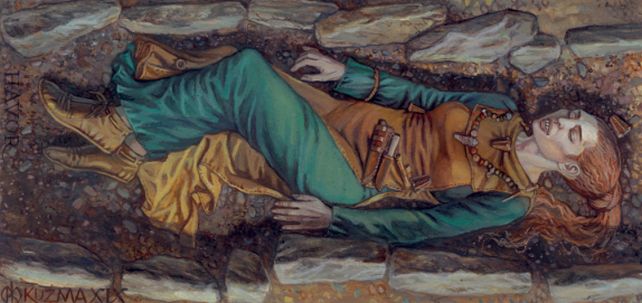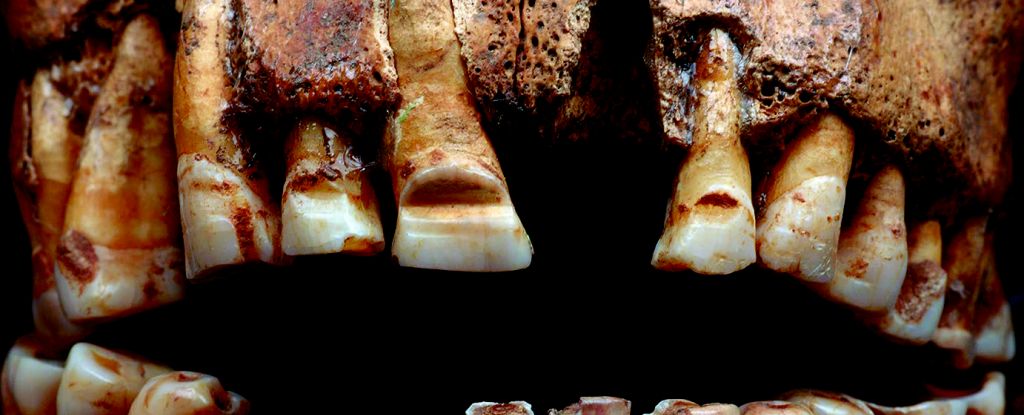Humans have modified their bodies in various ways throughout history, tattooing, piercing, scarring, implanting, or even deforming parts of their anatomy. In spite of its ubiquity, it’s not always clear why. Cultural traditions are a strong factor, as are beauty standards, which vary across time and place.
A new analysis of remains of individuals who lived in Viking Age Gotland around a thousand years ago suggests that their own body modifications reinforced social identities.
Archaeologists Matthias Toplak of the Viking Museum Haithabu and Lukas Kerk of the University of Münster in Germany found that horizontal grooves filed into the teeth may have been the mark of a group of merchant men.
Meanwhile, the only instances of an intentional reshaping and elongation of the skull associated with the Viking Age have been found in three Gotland women. The origin and meaning of that particular modification has been difficult to resolve.
“While both forms of body modification have received wide attention in other cultural contexts,” the researchers write in their paper, “the specific expressions of these customs in Viking Age society still lack systematic investigation in terms of their social implications.”
Tooth and skull modification have appeared in various forms for various cultures across thousands of years. Vikings have been known for some time to have practiced tooth modification, with masterfully filed horizontal grooves found on the teeth of Viking Age men from what are now Sweden and Denmark in a practice that seems to have persisted for centuries.
The largest concentration of remains with filed teeth were found in Gotland, which could suggest the practice originated there… but it also makes the region an excellent case study for understanding what the filed teeth were for. Did the Vikings just think they looked snazzy, or did they serve a deeper purpose?
Previous research suggested the bodies with filed teeth might belong to a specific group of people. In an analysis of the bones of around 130 such men, Toplak and Kerk note that the remains were deposited in places known to support trading, and that all individuals with filed teeth appear to be adult men.
In addition, the remains with filed teeth in one Gotland cemetery were all found in one spot, many face down, lending support to the possibility that it was the burial place for non-local individuals that stayed in the town periodically.
“We therefore theorize that the custom of tooth filing might have been linked to trading activities of larger groups of professional merchants,” they write.
“According to this theory, they might have functioned as a rite of initiation and sign of identification for a closed group of merchants, as some kind of precursor to the later guilds.”

Though possible it was an identifying feature of Gotland merchants, the practice itself was by no means restricted to this one location. With variations in the number of teeth filed and the number of lines per tooth, tooth filing could have had different purposes in different parts of Viking Age Sweden and Denmark.
As for the three women with skull modification, the grave of one had few surviving goods, but the other two were buried with the rich jewelry and clothing associated with Gotland burials, suggesting that they were accepted and valued members of their communities.
Although skull modification has not previously been associated with cultures in this region, previous DNA analysis found that one of the women was from Gotland, and another from the Baltic region, which means the practice can’t be confidently placed outside Gotland, as has been seen in other cemeteries.
It’s possible that the woman from Gotland was born elsewhere, however, to Gotlandish parents, underwent skull binding in early childhood, and then returned home to Gotland. Either way, all three women seem to be linked somehow. They all lived at around the same time, and the same method seems to have been used to shape their skulls.
Since their body modifications were not more broadly adopted by the Viking communities in which they lived, the researchers believe it had little meaning there, and therefore must have been performed somewhere other than Gotland.

Tooth filing and skull shaping represent two different approaches to body modification in Viking Age Gotland, the researchers say.
“The society of Viking Age Gotland utilized the custom of tooth filings as an internal sign system in their social communication. As a conscious and actively chosen embodiment of adults, predominantly male, we have argued that tooth filings were primarily intended for endogenous interpersonal communication – members of a certain social group could identify each other,” they write.
“The skull modification, on the other hand, was imposed on the three females during their earliest childhood to express their affiliation to a certain social group. This embodiment also expressed a form of endogenous interpersonal communication, that is as communication within a larger cultural group. On Gotland, however, this sign was probably unknown to the wider society.”
It’s impossible to know with certainty what function body modification practiced by our long-dead forebears served. However, by approaching it in the context of communication and community, we may be able to glean the beginning of understanding.
The team’s research has been published in Current Swedish Archaeology.





